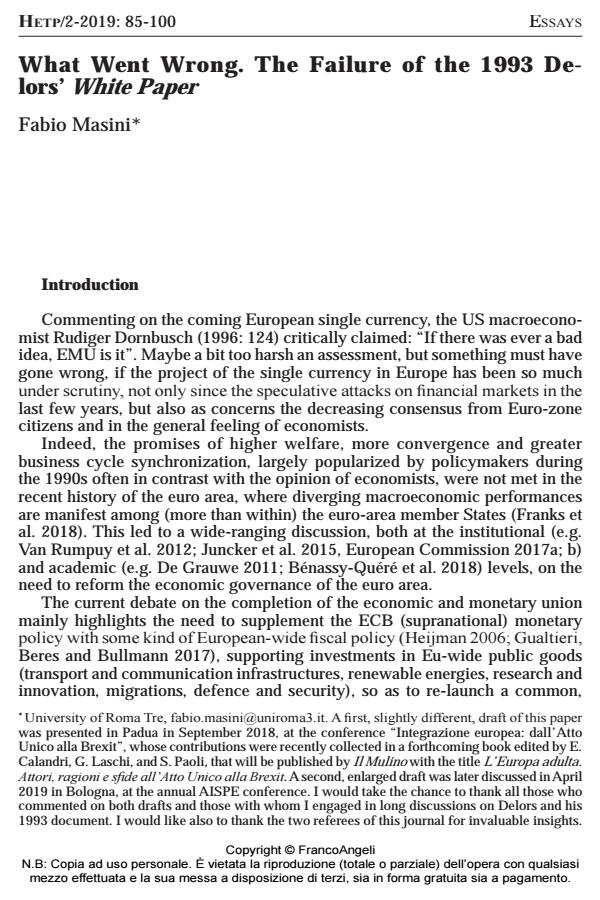What Went Wrong. The Failure of the 1993 Delors’ White Paper
Journal title HISTORY OF ECONOMIC THOUGHT AND POLICY
Author/s Fabio Masini
Publishing Year 2020 Issue 2019/2
Language English Pages 16 P. 85-100 File size 225 KB
DOI 10.3280/SPE2019-002004
DOI is like a bar code for intellectual property: to have more infomation
click here
Below, you can see the article first page
If you want to buy this article in PDF format, you can do it, following the instructions to buy download credits

FrancoAngeli is member of Publishers International Linking Association, Inc (PILA), a not-for-profit association which run the CrossRef service enabling links to and from online scholarly content.
In the late 1980s and early 1990s a process was started that would lead to the single currency in Europe. The choice made for its governance relied on an intergovernmental monitoring over convergence, based on the strict compliance to the Maastricht criteria. The White Paper of the Delors’s Commission on Growth, Competitiveness, Employment was issued in September 1993 to face the new internal and external threats to the European economies. It provided a framework for policy-action that should accompany the building of the euro and help the European economy survive the challenges of globalization, sustainability and new ICTs. The paper aims to examine the White Paper of 1993, and to analyse the reasons why it was neglected and eventually set aside by the member States, thus weakening the long-term prospects of the European economy and the sustainability of the forthcoming European single currency.
Keywords: Delors, European integration, unemployment, monetary union, fiscal stimulus
Jel codes: B31, E02, F15, H79
- Jacques Delors Laurent Warlouzet, pp.93 (ISBN:9782111741607)
- European Economic Governance and Constitutional Uncertainty Fabio Masini, in Nova Economia e8556/2024
DOI: 10.1590/0103-6351/8556
Fabio Masini, What Went Wrong. The Failure of the 1993 Delors’ White Paper in "HISTORY OF ECONOMIC THOUGHT AND POLICY" 2/2019, pp 85-100, DOI: 10.3280/SPE2019-002004